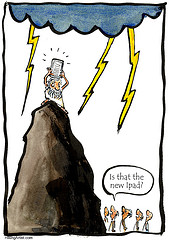
B. ePublish with an online publisher
B. ePublish with an online publisher
By Patricia de Hemricourt
For the sake of this specific post, ePublishers do not include traditional publishing houses that provide ePublishing in addition to print publishing.

Whether traditional or digital, a publisher gives the book a stamp of respectability as it had to satisfy their editorial policies. For us writers and for book reviewers, the value of such a stamp is relative to the respectability of the publisher. For the majority of eBook buyers though, the determining factors in buying a book are reviews and word of mouth. Few are those who would go through the trouble of researching the publishing house, should it be important for them to stay clear of self-published books.
The gates to ePublishers are more welcoming than those of traditional ones., both for direct submissions and e-mail submissions. According to Karen S. Wiesner’s, ePublishers acceptance rates vary between less than 1% and 60%, with a majority below 12%. Not too bad. Yet, a high acceptance rate seems directly correlated to a low number of submissions. What does this say about the publishing house?
Let’s examine the different categories of ePublishers.
- Established on-line publishers: These will have a substantial catalog and sometimes provide a double print/on-line publishing system by which on-line published books that pass a target number of online sales are also made available in print format, usually with a Print On Demand program. They will provide all formatting services for the various eBook reading devices. They also have mailing list of clients and a flurry of distribution and marketing tools. Though they are more open to direct submissions, these are very sought for and their acceptance rate falls into the less than 1% bracket, and is often biased towards authors presenting a sound self-marketing plan together with their manuscript.
- New on-line publishers: By definition, these are newcomers to the market, so there is no guarantee that they will succeed. Their acceptance rate is closer to the 60% bracket, but they have little to offer in exchange of a share of the royalties they will require from us writers. Before submitting with such a digital publisher, thorough research to establish whether they provide any valuable services such as editing, book cover creation, eformatting, distribution, marketing etc.
There are 2 sub genres of new on-line publishers worth a special mention- Authors who open their own publishing house look for additional writers to increase their revenue and monetize their personal experience while allowing greener writer to ride their wave to success. These have to be scrutinized thoroughly, especially if the only books in their catalog are their own.
- Marketing savvy crooks: These predators have now found a new niche in exploiting the dream of all of us writers to see our book in print, or, as it is, its virtual equivalent.
- Computer savvy entrepreneurs who see an opportunity to use their skills in assisting technologically challenged writers and provide them with a valuable service. Though they sometimes call themselves publishing houses, they are actually publishing platforms. As both are called publishers, it is somewhat confusing. Publishing platforms accept all writers ready to pay a fee or cede a percentage of their royalties for their services. As they mainly offer technical, graphic, editing and/or distribution services, they will be covered in tomorrow’s post.
A not negligible advantage of digital publishers vs. traditional publishers is the average royalties that we, writers, are entitled to.
Average royalties from epublishers are
- 30% to 50% on net receipts for digital sales.
- Up to 50% on direct to consumer sales and about 25% on ebook sales made through distributors such as Amazon and B&N.
- 50% of subsidiary rights income (i.e. translation, permissions, etc.)
Time to grade
- Upfront money investment (nil)
- Time investment (1 hour to infinity)
- Time line to publication (3 months – infinity)
- Probability of gaining access to the platform (10%)
- Copyright retention (moral rights, others to be negotiated)
- Royalties percentage for the author (up to 50%)
- Risk of ending with a scammer/unprofessional provider (high)
- Required self-involvement in marketing (medium to high)
- Probability of rising to best-seller status (very low)
See our list of ePublishers reviews for more info